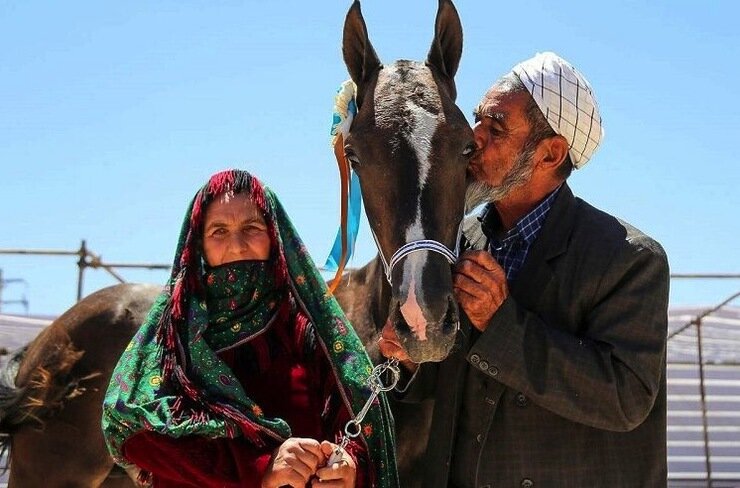Turkmen horses may enter UNESCO list

TEHRAN – Iran and Turkmenistan will jointly put forward the Turkmen horses and their safeguarding practices as a candidate for inclusion in UNESCO’S list for Intangible Cultural Heritage.
“Iran and Turkmenistan are working together to develop a dossier on the breeding and maintenance of Turkmen horses to be submitted to the United Nations Educational, Scientific and Cultural Organization,” IRNA quoted Golestan province’s tourism chief as saying on Thursday.
The Turkmen horse is noted for endurance, bravery, smartness, and slender body. Many locals believe that breeding such horses is one of the toughest jobs in the world.
Such animals are dominantly found in the pasturelands of Turkmen Sahra, a region sandwiched between Iran and Turkmenistan.
Moreover, another dossier for the Great Wall of Gorgan -- one of the longest brick barriers of the ancient world – was submitted to UNESCO last month after several years of continuous work and effort, Ahmad Tajari added.
The defensive wall is about 200 km in length and it was built to prevent the invasion of the northern tribes. It is said to be the longest architectural work of ancient Iran, which was built in 90 years.
Also known as Red Wall, which in some ancient texts is referred to as the Red Snake, this wall is the longest brick ancient barrier between Central Europe and China, longer than Hadrian’s Wall and the Antonine Wall put together and the third-largest wall in the world after the walls of China and Germany.
Most parts of the gigantic monument are still hidden underneath the surface through some segments that have so far been unearthed and even restored to former glory.
It is worth mentioning that archaeological excavations have so far identified ditches, brick kilns, earthen dams, water canals, 38 forts, and watchtowers attached to the wall, and more than 25 castles in the southern margin of the wall as well as several ancient sites from prehistoric, historic, and Islamic eras.
The gigantic barrier is also more than three times the length of the longest late Roman defensive wall built from scratch, the Anastasian Wall west of Constantinople. The combined area of the forts on the Gorgan Wall exceeds that of those on Hadrian’s Wall about threefold.
Furthermore, the wall and its associated ancient military monuments provide a unique testimony to the engineering skills and military organization of the Sassanian Empire. They help to explain its geographic extent, from Mesopotamia to the west of the Indian Subcontinent, and how effective border defense contributed to the Empire’s prosperity in the interior and its longevity. These monuments are, in terms of their scale, historical importance, and sophistication, of global significance.
Golestan is home to hundreds of historical and natural sites, with UNESCO-registered Gonbad-e Qabus – a one-millennium-old brick tower – amongst its most famous.
AFM

Leave a Comment